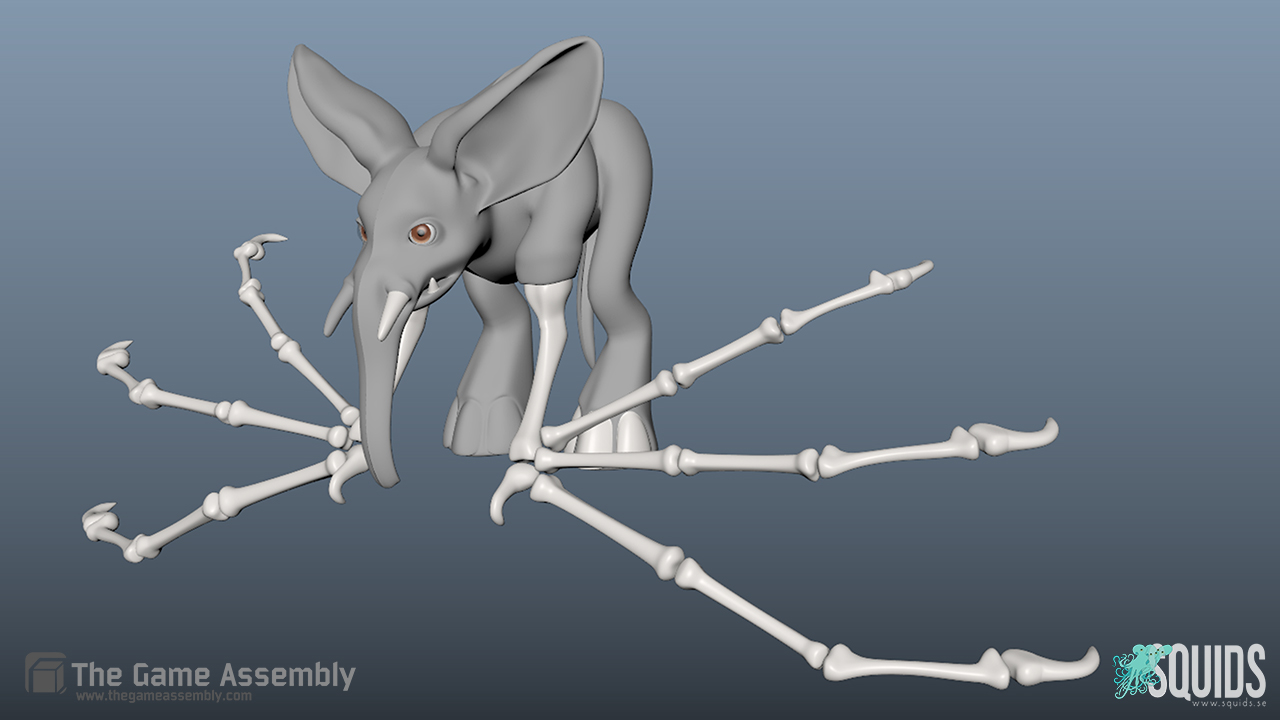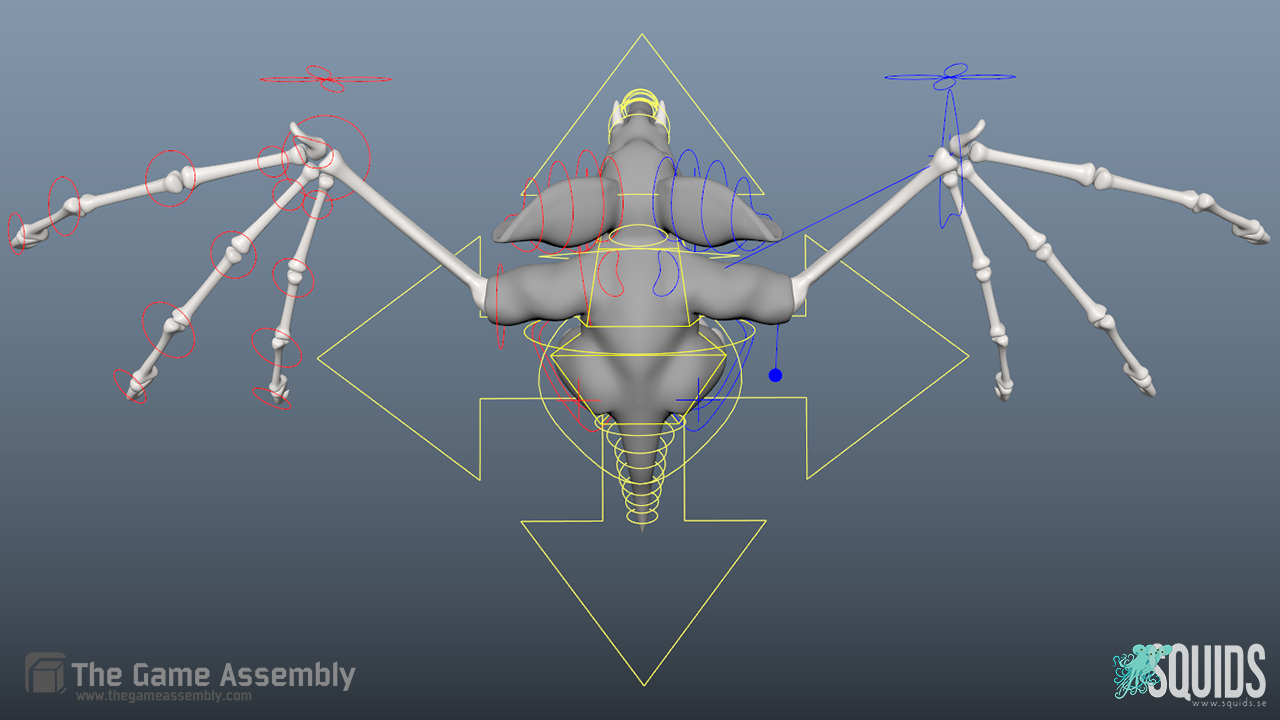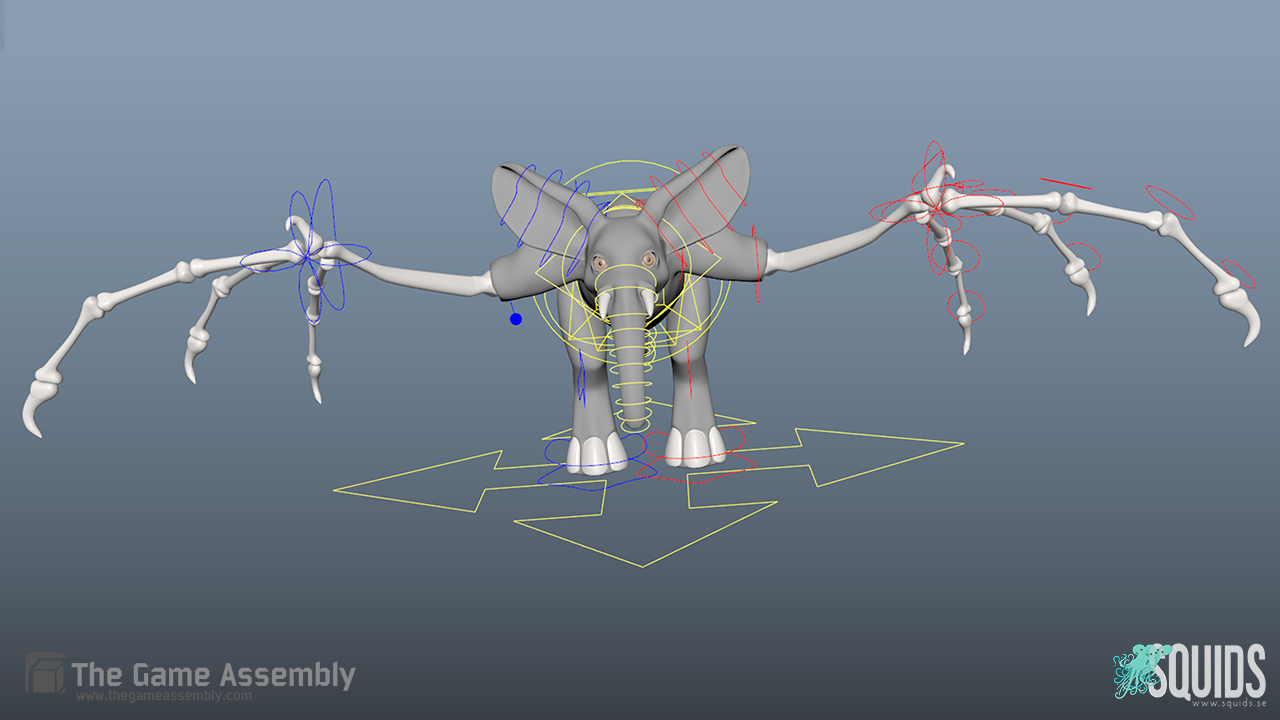The initial idea was to try out and make different functionalities of a creature, which resulted in me modeling a hybrid between an elephant an a bat. The approach was to create a pair of wings that could also work as frontlegs when folded, without having to add an extra pair of legs.

The early design and the positioning of the mesh needed some consideration to be ready and fit for rigging. What motions would be the most frequent and would these involve stretches to the skinning? Would this creature in the end need two different rigs?
The functions and the controls were dependent on the creatures abilities. Flying was this creature's main ability and walking on the foldable wings just a secondary feature. Wiggling the ears, tails, trunks and tilting the toes were important features to include.

The solutions to what a functionable rig should be able to and prevented to do is always a challenge. For the creature to feel alive, the rig sometimes need to make extreme postures. A ribbon spine, that was placed more in the centre of the body, eliminated tensions that a rigger sometimes has with the skinning around a big stomach.

There are both advantages and disadvantages of modeling as a rigger. The initial pose is essential to determine before rigging. However, if this or for other reasons the geometry is not beneficial for rigging purposes, the rigger can simply adjust and mend the mesh and thereby just continue with the process of rigging. On the other hand modeling is very time consuming, when a rigger could spend time finding solutions to the functionability. A close collaboration and good communication with the modeller would solve this pipeline obstacle.